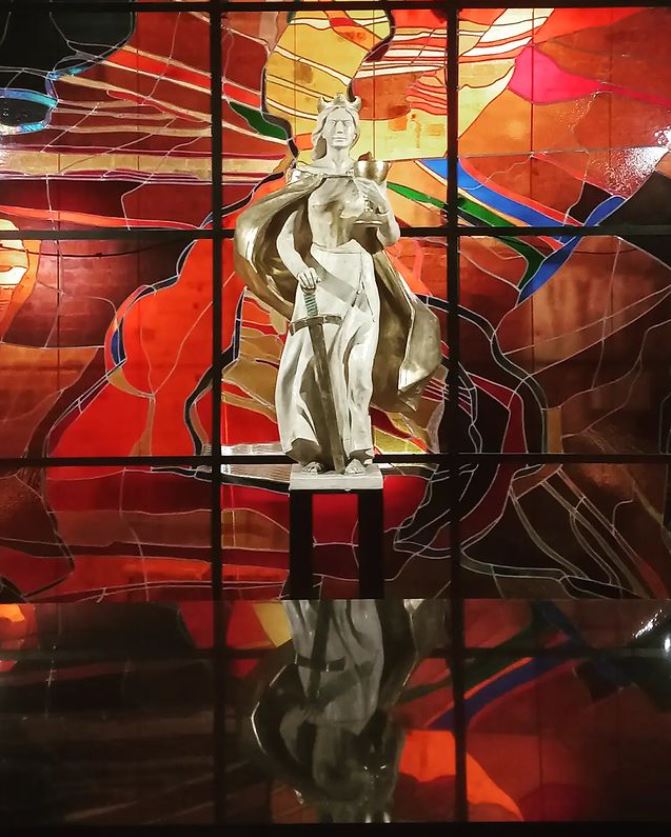
There are many biographies and histories about St. Barbara. Barbara was born in a wealthy, pagan family. However, she encountered Christianity, decided to convert to this faith and took vows of chastity. Her father had different plans for his daughter and wanted her to get married. That is why he decided to put an end to her actions. He kept her guarded in a tower that had walls decorated with pagan symbols: the Sun, Moon, planets and stars. He wanted to “break” his daughter this way and encourage her to getting married. When his actions did not bring the desired effect, the father, for fear of losing his high social position, dragged her before the court. She was sentenced to flagellation and other more and more drastic tortures. However, Barbara did not feel the pain by divine power. Then, the judge passed sentence to behead Barbara. Her father was to carry out the final sentence. However, Barbara managed to escape and found shelter in a rock that supposedly miraculously parted in front of her. She was betrayed by a shepherd and the sentence was carried out. Reportedly God’s punishment came upon her traitor and her executioner – her father. The shepherd‘s sheep turned into locust and her father was struck by lightning after executing the death sentence.
St. Barbara became the confidante of those whose work exposes them to constant danger and death. The miners undoubtedly are faced with such threat.
“Miners who knew that their Barbara found shelter in the said mountain (…) always hailed their patron when they were bedeviled by the Demon, chased by the devil, saw some other phantasms or after they heard the shuffling of cold death in the black adits. (…) And there Barbara defended them from this mischievous, semi-insane loony, perhaps being the ghost of a repentant rich man, (…)”.
Józef Szczypka, Polish Calendar
The photo depicts the sculpture of St. Barbara in Guido mine. The author of the photo is @readheadrapunzel (Instagram).

